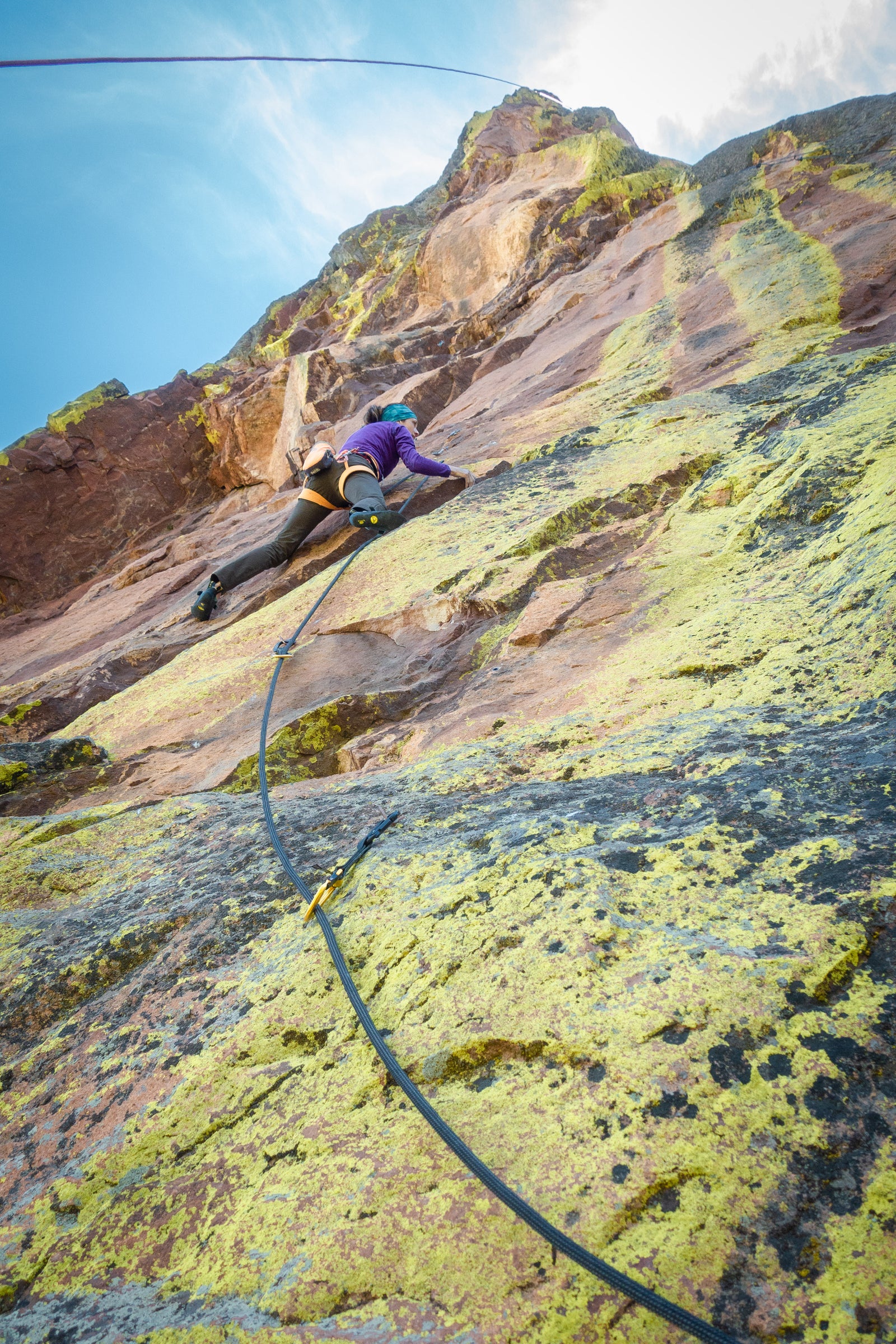By Chris Weidner
This story originally appeared in The Daily Camera. Special thanks to Chris Weidner for permissions to repost.

Heather Weidner attempts The Perfect Storm (5.13a). The rope hanging from the top highlights the incredibly steep rock on this portion of Seal Rock’s north face. Photo: Chris Weidner
Within the last 12 months, new regulations have been implemented at popular climbing destinations nationwide, including Yosemite National Park, Rocky Mountain National Park and Nevada’s Red Rock Canyon, with more on the way. And while COVID is the ostensible reason, a recent article on the Access Fund website asserts, “Planning for many of these reservation and permit systems has been in the works for years... it was only a matter of time.”
Of course, these restrictions affect all visitors, of which climbers are just a fraction. But because climber safety depends upon accurate weather forecasts, especially up high, planning climbs requires a certain level of spontaneity – which is precisely what’s being limited.
As climbers, it’s easy to view our glass of future access as half-empty. So now, more than ever, it’s worth remembering our success stories – especially one that’s right in our backyard.
In the mid-1980s, Boulder’s elite began to establish some of North America’s hardest sport routes right here in the Flatirons. And the potential for more seemed limitless.
But soon, a confrontation between a climber and hiker snowballed into a conflict between climbers as a whole and what was then the Department of Recreation (DOR) and Mountain Parks. “The relationship between the land manager and climbers could not have been worse,” said Dave Turner, an attorney and longtime Flatirons champion. “The head of the Department told Chris Archer (a leader in climbing circles) they would allow new bolts in the Flatirons ‘when hell freezes over.’”
An immediate and complete ban on fixed anchors shut down climbing development for the next 15 years. In terms of climbing evolution, the Flatirons became a backwater.
A full decade passed before Access Fund activist, Rico Thompson, organized a cadre of climbers, including representatives from 4 local and national organizations, to challenge the ban. They approached the DOR with three goals: 1) to demonstrate that climbers are not only users of the Flatirons, but caretakers, 2) to improve their relationship with the city, and 3) to secure a pilot program for new routes.
The climbers sponsored trail projects, restoration efforts and educational outreach. By 1998 they formed what became the Flatirons Climbing Council (FCC) and slowly rebuilt a relationship with the city based on trust and teamwork.
“After many meetings – we’re talking 18 months to two years of this – they agreed to a pilot project,” said Turner, who served as FCC President from 2001-2007.
But then came a devastating blow.
The Boulder City Council adopted Mountain Parks from the DOR, which gave the Flatirons a new land manager and completely different staff. “So we had to start all over again,” said Turner. “Square one.”
Eventually, in 2003, Open Space and Mountain Parks (OSMP) signed a Memorandum of Understanding (MOU) with the FCC, to allow for a handful of new routes on two minor formations: Der Zerkle and Red Devil.
“When the bolting ban was lifted, and the first new route went into the Red Devil, it was Archer’s route,” said Turner. “And you know what it’s named? ‘Hell Freezes Over.’”

Vince Nett begins pitch two of The Perfect Storm (5.13a) last September, with Jason Giblin belaying. Thanks to the ongoing cooperation between climbers and the City of Boulder, a limited number of new routes are allowed each year, like this two-pitch sport climb on Seal Rock established by the author in 2019. Photo: Chris Weidner
In the last 18 years roughly 60 high-quality routes have been added to the Flatirons in accordance with the MOU. And the FCC and OSMP partner up regularly, most recently for a volunteer trail project Saturday July 17th to improve the climber access trail on the south side of the Third Flatiron. “The current relationship between OSMP and the climbing community is in a great place,” said Beau Clark, OSMP Trails Volunteer Coordinator. “It’s really highlighted by open dialogue and the willingness to be flexible – two things that serve the long game well.”

Rui Ferreira, President of the Flatirons Climbing Council (FCC), on his new Seal Rock route, Nattiq (5.12b), the Inuit word for ‘ringed seal.’ Photo: Chris Weidner
In addition to trail projects, climbers and OSMP collaborate on a successful raptor monitoring program, wag bag dispensers (to minimize human waste), bolt replacement, trash clean-up events and more.
“We have consistently validated our interest in not only advocating for climbing, but also advocating for the well-being of the Flatirons themselves,” said Rui Ferreira, current FCC President.
And that really points to the right way forward, in the Flatirons and everywhere else climbers explore – regardless of new regulations: we must ensure that access and stewardship go hand in hand.

The trail crew from last Saturday’s project on the south side of the Third Flatiron – a collaborative effort between OSMP, the FCC and other volunteers. Photo: Beau Clark
__________
Want to make a difference? Reach out to the FCC here, and make sure to regularly check their events page for upcoming volunteer days!
For more stewardship volunteer opportunities, see The Access Fund's frequently updated Take Action page.
Contact Chris Weidner at cweidner8@gmail.com
Follow him on Instagram @christopherweidner and Twitter @cweidner8

